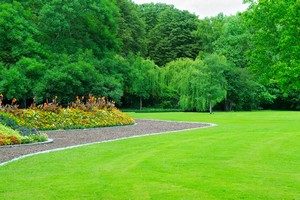Sod vs. Seed: Which Option Is Right for You?
Sod vs. Seed: Which Option Is Right for You?

When it’s time to start a new yard or overhaul an existing one, the first big decision is whether to go with sod or seed. Each approach has its pros and cons, and the right choice depends on your budget, timeline, property conditions, and expectations for maintenance. In this guide, we’ll break down the key differences so you can make the best decision for your landscaping project.
What Is Sod?
Sod is pre-grown grass that comes with a layer of soil and roots. It’s harvested in rolls or slabs and installed over prepared ground. Once placed, it gives the appearance of an instant lawn, although the roots still need time to grow into the soil below. This makes sod a great option for homeowners who want fast, consistent results without waiting for grass to grow from scratch.
The biggest benefit of sod is its immediate visual impact. Your yard looks finished the same day it’s installed. It’s also more effective at preventing erosion on slopes or in areas prone to heavy rain. Because sod is densely packed, it provides a natural barrier against weed growth during early establishment.
However, these advantages come at a cost. Sod is significantly more expensive than seed, both in terms of material and labor. In many cases, the grass types available in sod are more limited and may not be perfectly suited to your soil or climate. It also requires consistent watering for the first few weeks to ensure the roots bond with the soil below.
What Is Grass Seed?
Grass seed is the traditional method for starting a lawn. It involves spreading seed over prepared soil and then nurturing it through germination and early growth. While it requires more patience, seeding offers more flexibility and is far more cost-effective.
Seeding allows you to select a grass type tailored to your region’s climate, sunlight, and soil conditions. It’s also ideal for larger areas where laying sod would be cost-prohibitive. Over time, seeded lawns tend to develop deeper root systems, which can lead to better drought resistance and long-term resilience.
The trade-off is that seeding takes longer. You may need to wait several weeks or even months for full coverage, and early growth stages are more vulnerable to weeds. It also requires frequent watering and monitoring, especially during hot or dry weather.
Which Option Should You Choose?
Deciding between sod and seed depends on your specific goals, budget, and how quickly you want to see results. Here’s a quick breakdown to help guide your choice:
- Choose sod if:
- You need a finished yard quickly for a sale, event, or immediate curb appeal
- Your property is prone to erosion or has sloped areas that need stable coverage fast
- You are comfortable investing more up front for faster results
- You can commit to a strict watering schedule during the first few weeks after installation
- Choose seed if:
- You’re working with a limited budget and have a larger area to cover
- You want to choose a grass variety that’s better suited to your region or soil type
- You’re willing to wait longer for full coverage and healthy growth
- You can maintain a consistent watering and care routine during the early stages of development
Both methods can lead to a beautiful yard with the right preparation and care. The best option comes down to what matters most for your timeline, property, and expectations.
















